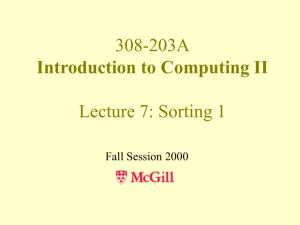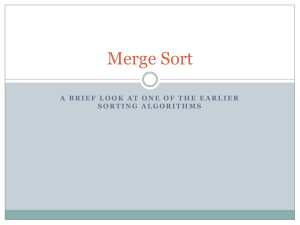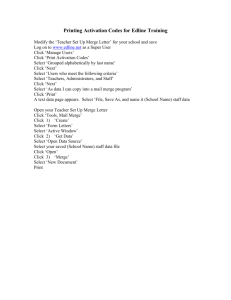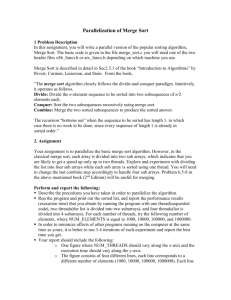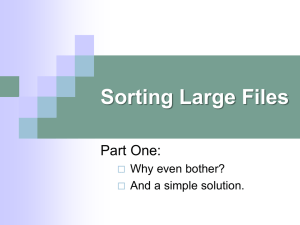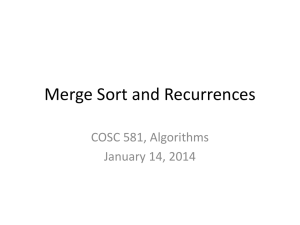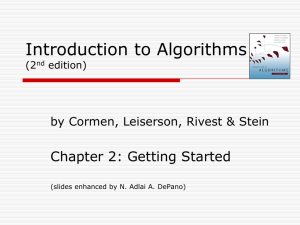Merge Sort algorithm
advertisement
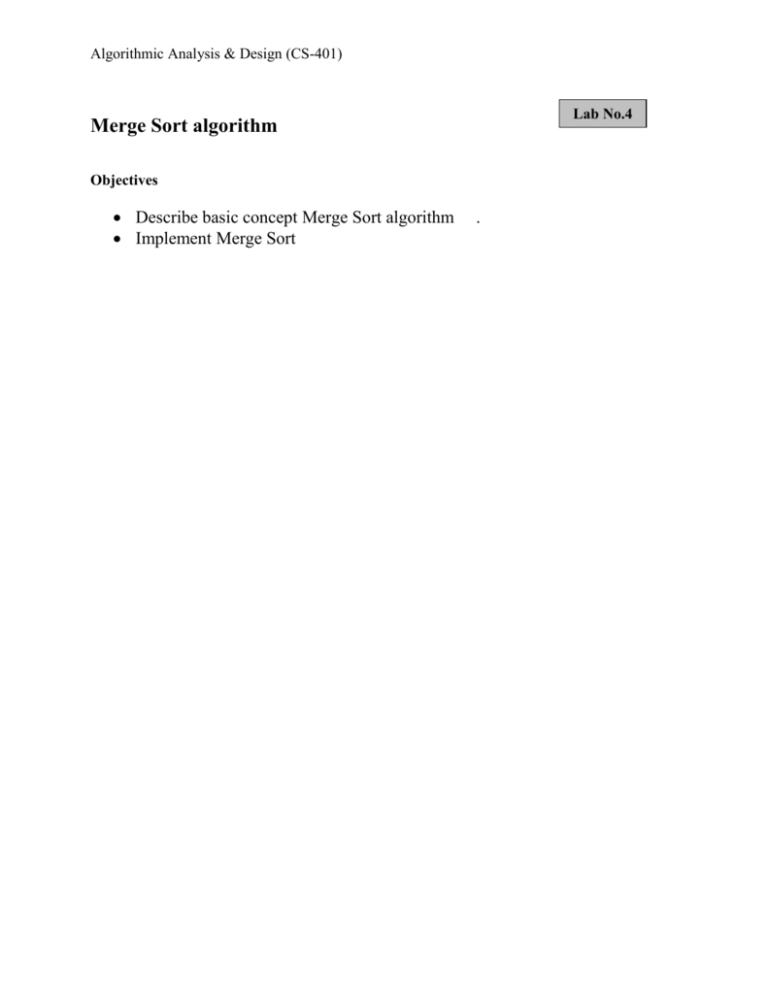
Algorithmic Analysis & Design (CS-401) Lab No.4 Merge Sort algorithm Objectives Describe basic concept Merge Sort algorithm Implement Merge Sort . Algorithmic Analysis & Design (CS-401) Merge Sort algorithm Merge sort is based on the divide-and-conquer paradigm. Its worst-case running time has a lower order of growth than insertion sort. Since we are dealing with subproblems, we state each subproblem as sorting a subarray A[p .. r]. Initially, p = 1 and r = n, but these values change as we recurse through subproblems. To sort A[p .. r]: 1. Divide Step If a given array A has zero or one element, simply return; it is already sorted. Otherwise, split A[p .. r] into two subarrays A[p .. q] and A[q + 1 .. r], each containing about half of the elements of A[p .. r]. That is, q is the halfway point of A[p .. r]. 2. Conquer Step Conquer by recursively sorting the two subarrays A[p .. q] and A[q + 1 .. r]. 3. Combine Step Combine the elements back in A[p .. r] by merging the two sorted subarrays A[p .. q] and A[q + 1 .. r] into a sorted sequence. To accomplish this step, we will define a procedure MERGE (A, p, q, r). Note that the recursion bottoms out when the subarray has just one element, so that it is trivially sorted. Algorithmic Analysis & Design (CS-401) The pseudocode of the MERGE procedure is as follow: MERGE (A, p, q, r ) 1. 2. 3. 4. 5. 6. 7. 8. 9. 10. 11. 12. 13. 14. 15. 16. 17. n1 ← q − p + 1 n2 ← r − q Create arrays L[1 . . n1 + 1] and R[1 . . n2 + 1] FOR i ← 1 TO n1 DO L[i] ← A[p + i − 1] FOR j ← 1 TO n2 DO R[j] ← A[q + j ] L[n1 + 1] ← ∞ R[n2 + 1] ← ∞ i←1 j←1 FOR k ← p TO r DO IF L[i ] ≤ R[ j] THEN A[k] ← L[i] i←i+1 ELSE A[k] ← R[j] j←j+1 Lab Task Write a Code which performs Merge sort algorithm on user defined data input must be in linked list.
